Recently, the Indian Meteorological Department (IMD) issued an advisory on the heatwaves and revealed a terrific image of rising heat wave conditions in multiple areas — from Rayalaseema in Andhra Pradesh to the western parts of Madhya Pradesh.
| Must Read | |
| NCERT Notes For UPSC | UPSC Daily Current Affairs |
| UPSC Blogs | UPSC Daily Editorials |
| Daily Current Affairs Quiz | Daily Main Answer Writing |
| UPSC Mains Previous Year Papers | UPSC Test Series 2024 |
Zakariyapura village in Anand district, Gujarat has become a model for other villages across India by embracing small-scale biogas facilities in every household that owns milch cattle.
Biogas Facility:
Significance:
|
|---|
| Must Read | |
| NCERT Notes For UPSC | UPSC Daily Current Affairs |
| UPSC Blogs | UPSC Daily Editorials |
| Daily Current Affairs Quiz | Daily Main Answer Writing |
| UPSC Mains Previous Year Papers | UPSC Test Series 2024 |
The Andhra Pradesh Forest Department finds that the Indian laurel tree stores water in summer as claimed by the Konda Reddi tribe.
Konda Reddi Tribe
|
|---|
Indian Laurel Tree
|
| Must Read | |
| NCERT Notes For UPSC | UPSC Daily Current Affairs |
| UPSC Blogs | UPSC Daily Editorials |
| Daily Current Affairs Quiz | Daily Main Answer Writing |
| UPSC Mains Previous Year Papers | UPSC Test Series 2024 |
The Steel Ministry has initiated efforts to develop a thorough green steel policy to reduce carbon emissions.

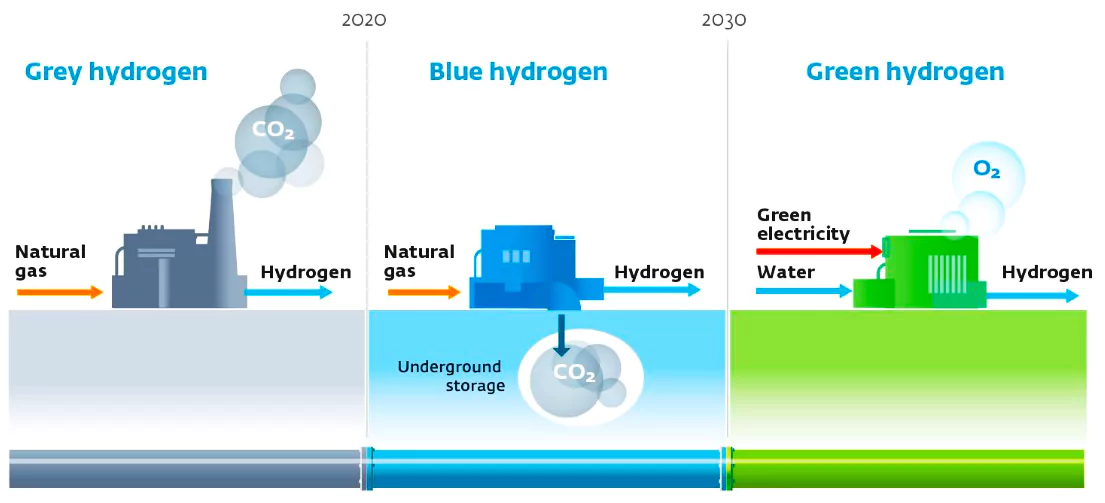 Green Hydrogen: Green hydrogen is a solution that emits only water when it’s burned.
Green Hydrogen: Green hydrogen is a solution that emits only water when it’s burned.| Benefits | Drawbacks |
|
|
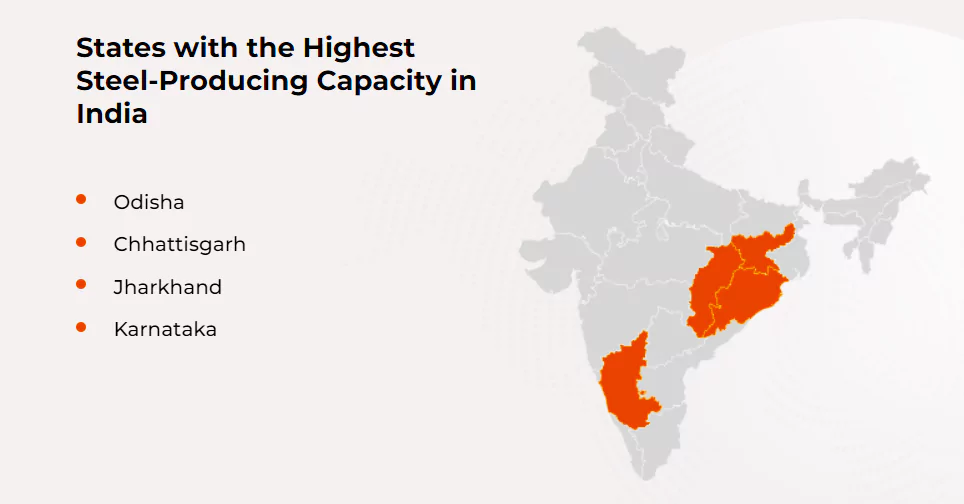 Finished steel production stood at 121.29 MT during the same period.
Finished steel production stood at 121.29 MT during the same period.
| Must Read | |
| NCERT Notes For UPSC | UPSC Daily Current Affairs |
| UPSC Blogs | UPSC Daily Editorials |
| Daily Current Affairs Quiz | Daily Main Answer Writing |
| UPSC Mains Previous Year Papers | UPSC Test Series 2024 |
Daniel Kahneman, one of the pioneers of psychology and economics research recently passed away.

Behavioural economics: It combines elements of economics and psychology to understand how and why people behave the way they do in the real world.
|
|---|
Reconstruction method: It asked participants to think about their previous day and break it up into episodes.
|
|---|
| Must Read | |
| NCERT Notes For UPSC | UPSC Daily Current Affairs |
| UPSC Blogs | UPSC Daily Editorials |
| Daily Current Affairs Quiz | Daily Main Answer Writing |
| UPSC Mains Previous Year Papers | UPSC Test Series 2024 |
NATO recently marked its 75th anniversary amidst disagreement over the next leader of the military alliance.
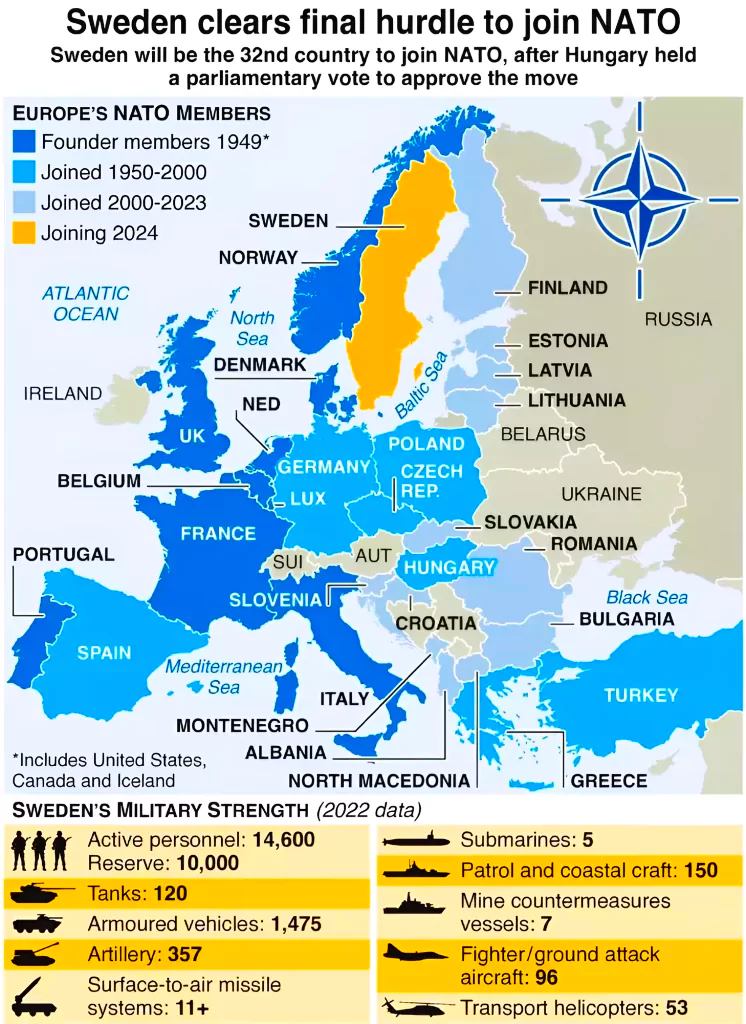
| Must Read | |
| NCERT Notes For UPSC | UPSC Daily Current Affairs |
| UPSC Blogs | UPSC Daily Editorials |
| Daily Current Affairs Quiz | Daily Main Answer Writing |
| UPSC Mains Previous Year Papers | UPSC Test Series 2024 |
The death anniversary of Maratha warrior Chhatrapati Shivaji Maharaj is observed on 3rd April 1680 every year.
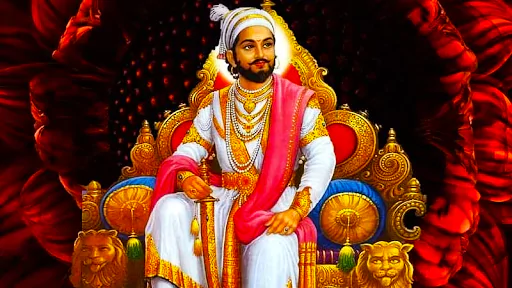
| Must Read | |
| NCERT Notes For UPSC | UPSC Daily Current Affairs |
| UPSC Blogs | UPSC Daily Editorials |
| Daily Current Affairs Quiz | Daily Main Answer Writing |
| UPSC Mains Previous Year Papers | UPSC Test Series 2024 |
The World Bank released the South Asia regional update report, Jobs for Resilience.
| Must Read | |
| NCERT Notes For UPSC | UPSC Daily Current Affairs |
| UPSC Blogs | UPSC Daily Editorials |
| Daily Current Affairs Quiz | Daily Main Answer Writing |
| UPSC Mains Previous Year Papers | UPSC Test Series 2024 |
According to a monthly survey released, India’s manufacturing sector had a strong performance in March, supported by strong sales and production.
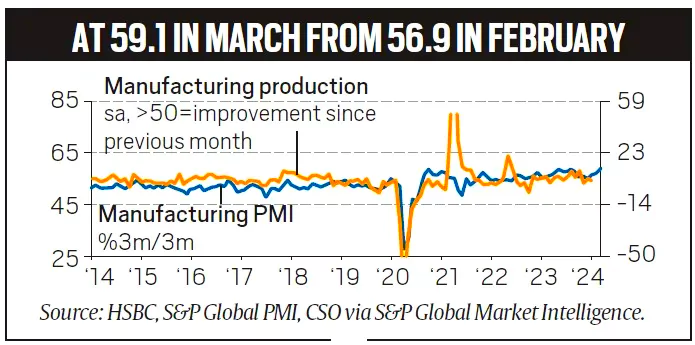 This coincided with the second-most significant increase in input inventories in the survey’s history.
This coincided with the second-most significant increase in input inventories in the survey’s history.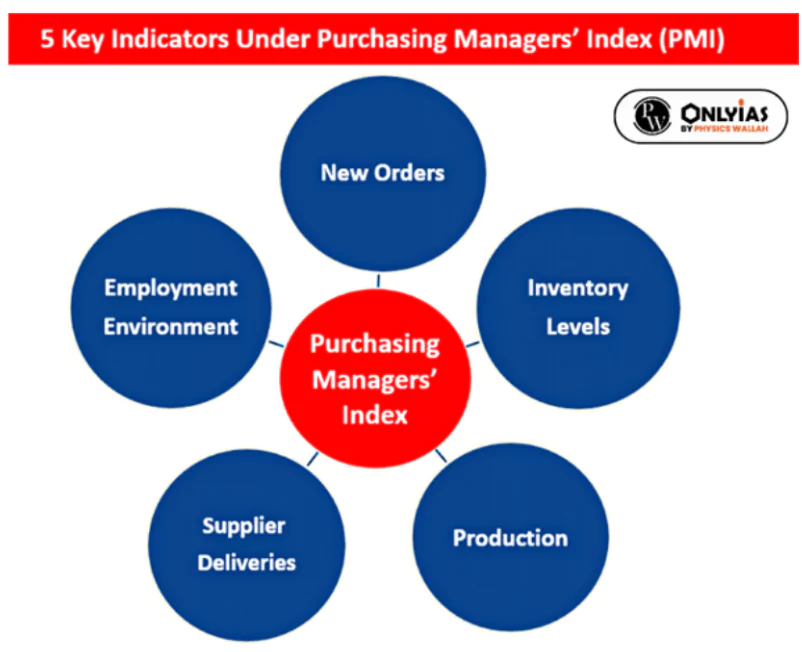 For manufacturing PMI, the questionnaire is sent to manufacturing companies. The questions are related to 5 key variables.
For manufacturing PMI, the questionnaire is sent to manufacturing companies. The questions are related to 5 key variables.
| Must Read | |
| NCERT Notes For UPSC | UPSC Daily Current Affairs |
| UPSC Blogs | UPSC Daily Editorials |
| Daily Current Affairs Quiz | Daily Main Answer Writing |
| UPSC Mains Previous Year Papers | UPSC Test Series 2024 |
The first part of the 29th session of the International Seabed Authority (ISA) Assembly and Council took place recently in Jamaica.
| Relevance for Prelims: Ocean Resources And Its Potential, and UNITED NATIONS CONVENTION ON THE LAW OF THE SEA (UNCLOS).
Relevance for Mains: Deep-sea Mining: Significance, Challenges, and Regulations. |
|---|
International Seabed Authority (ISA)
|
|---|
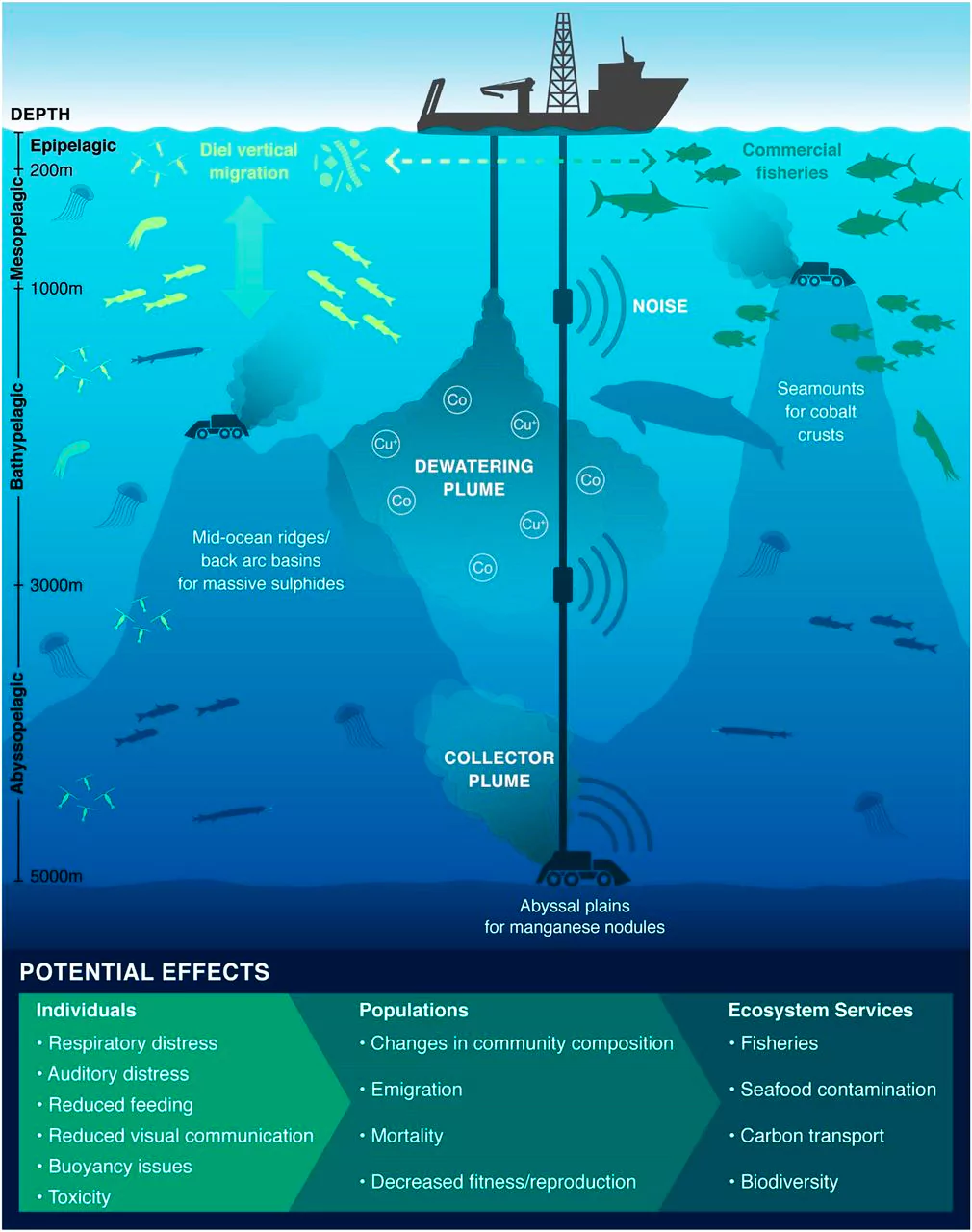
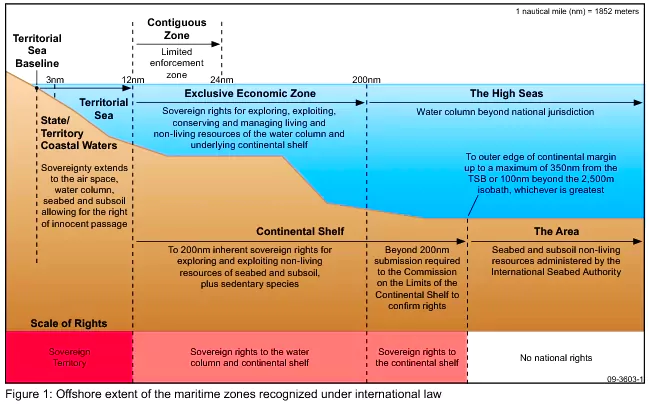
| Prelims PYQ (2022):
With reference to the United National Convention on the Law of Sea, consider the following statements: 1. A coastal state has the right to establish the breadth of its territorial sea up to a limit not exceeding 12 nautical miles, measured from baseline determined in accordance with the convention. 2. Ships of all states, whether coastal or land-locked, enjoy the right of innocent passage through the territorial sea. 3. The Exclusive Economic Zone shall not extend beyond 200 nautical miles from the baseline from which the breadth of the territorial sea is measured. Which of the statements given above are correct? (a) 1 and 2 only (b) 2 and 3 only (c) 1 and 3 only (d) 1, 2 and 3 Ans: (d) |
|---|
| Mains Question: How do ocean currents influence the worldwide distribution of marine resources? (10 M, 150 Words) |
|---|
| Must Read | |
| NCERT Notes For UPSC | UPSC Daily Current Affairs |
| UPSC Blogs | UPSC Daily Editorials |
| Daily Current Affairs Quiz | Daily Main Answer Writing |
| UPSC Mains Previous Year Papers | UPSC Test Series 2024 |
Recently, the Indian Prime Minister’s post on social media of ‘callously‘ giving away the disputed territory of Katchatheevu Island to Sri Lanka in 1974 has resurfaced the issue again.
| Relevance for Prelims: Katchatheevu Island, Katchatheevu Island Issue, India-Sri Lanka Relations, and India Sri Lanka Economic Ties.
Relevance for Mains: Katchatheevu Island Controversy: Background, Concerns, and Way Forward. |
|---|
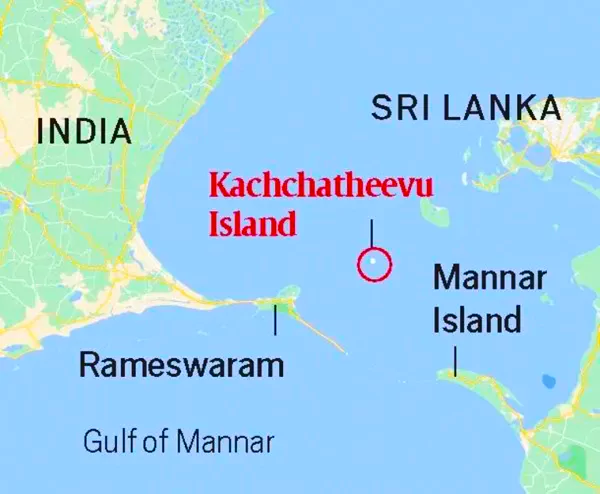
Katchatheevu Island Map
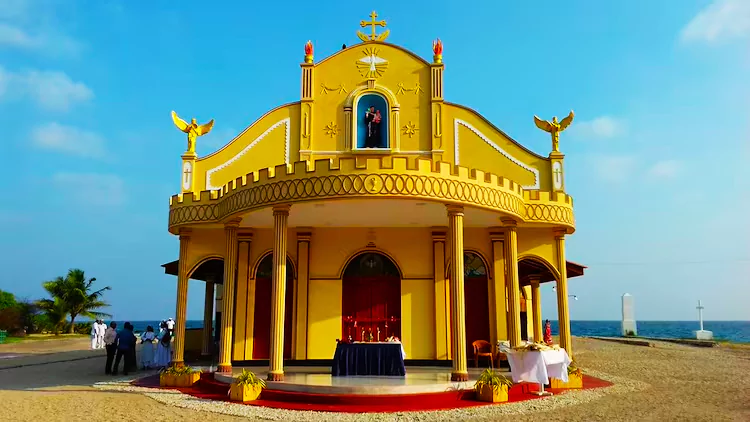 Features of Katchatheevu Island
Features of Katchatheevu Island
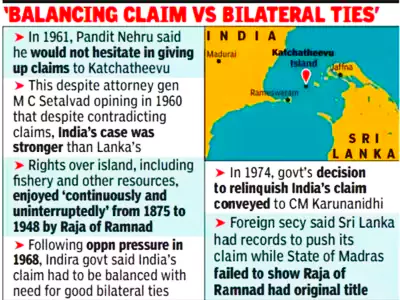 Reason: It is due to complex factors like excessive trawling in the Sethusamudram region, contested legacies of the Lankan civil war, and the bilateral irresolution of the Tamil question.
Reason: It is due to complex factors like excessive trawling in the Sethusamudram region, contested legacies of the Lankan civil war, and the bilateral irresolution of the Tamil question.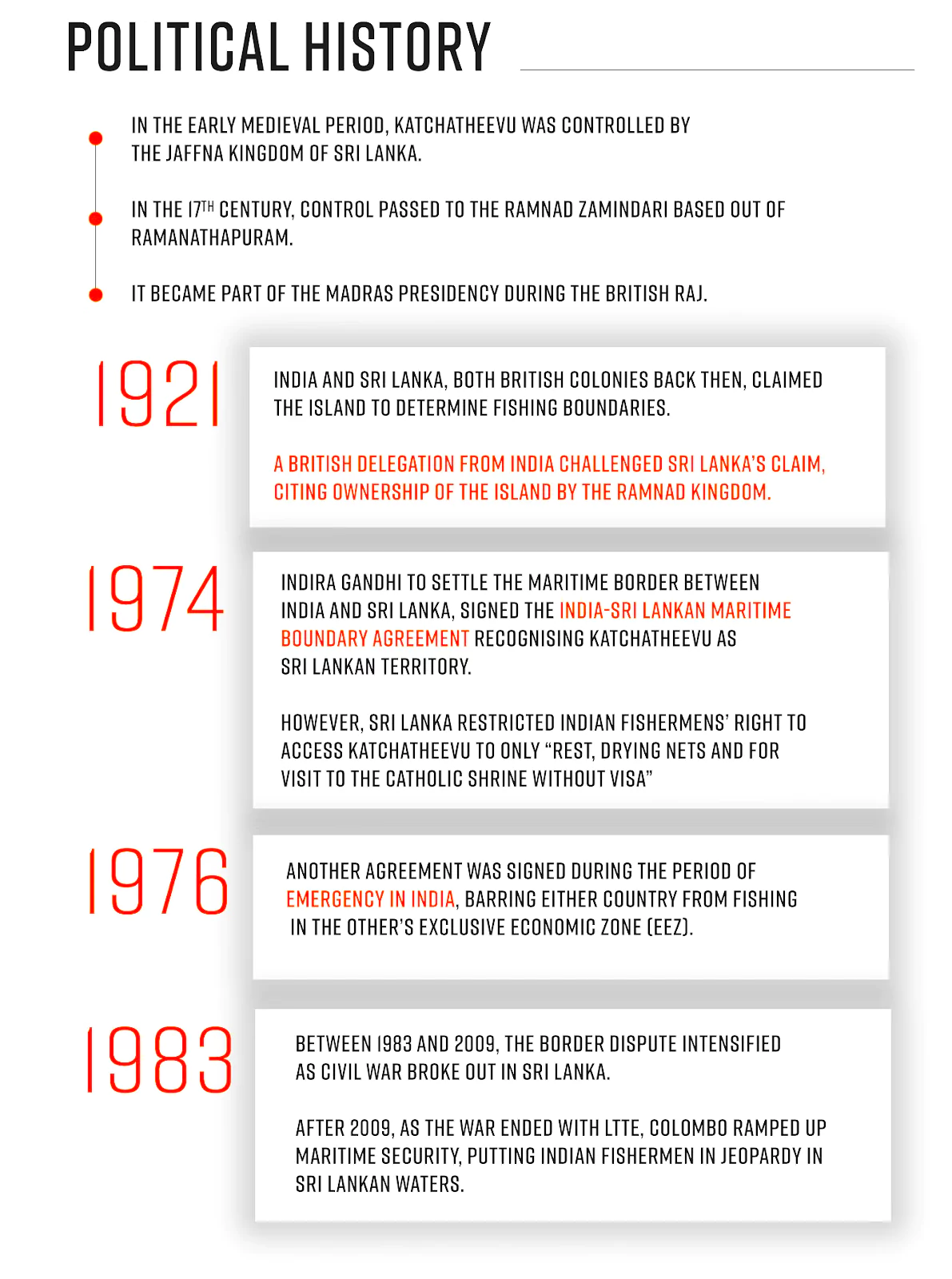 It became part of the Madras Presidency during the British Raj.
It became part of the Madras Presidency during the British Raj. |
Key Provisions of the Indo-Sri Lankan Maritime Agreement, 1974 |
|
| Article 4 |
|
| Article 5 |
|
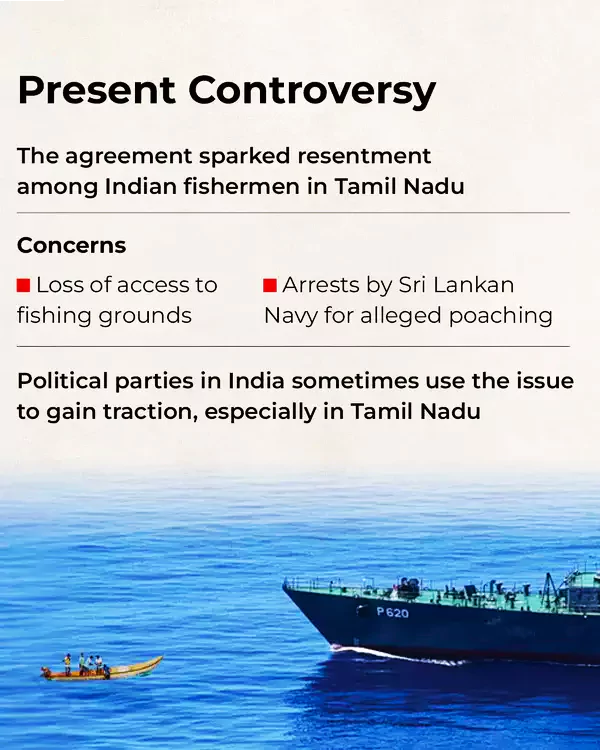
| Must Read | |
| NCERT Notes For UPSC | UPSC Daily Current Affairs |
| UPSC Blogs | UPSC Daily Editorials |
| Daily Current Affairs Quiz | Daily Main Answer Writing |
| UPSC Mains Previous Year Papers | UPSC Test Series 2024 |
<div class="new-fform">
</div>
